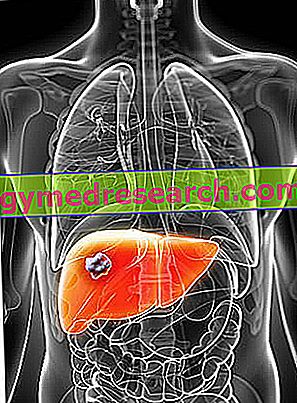Brucellosis is an infectious disease, an antropozoonosis also known as Maltese fever, Mediterranean fever or undulating fever .
Causes and Contagion
Brucellosis is from gram-negative bacteria belonging to the genus Brucella, in particular Brucella abortus, Brucella suis and Brucella melitensis, which are transmitted from animals (especially sheep, cattle and pigs) either directly or indirectly.

More commonly, brucellosis is transmitted by ingesting infected foods, such as fresh unpasteurized milk and its derivatives (fresh cheeses, ice cream, cream and butter); more rarely with plants contaminated with infected urine. The brucelle, in fact, are rapidly killed by heat (10 minutes at 60-70 ° C are enough), they are not very resistant to gastric juices, while in faeces and urine they survive even for a few weeks.
The transmission of brucellosis from man to man is quite rare; it is believed that the infection can occur sexually or through breast milk.
Symptoms
To learn more: Brucellosis symptoms
After penetrating the organism, the brucella are localized in the regional lymph nodes, to then spread in the circulation and colonize various organs, especially those rich in reticulo-endothelial tissue, where they cause irritative and proliferative phenomena. In the presence of brucellosis, some particularly rich organs of this tissue, such as the liver and spleen, can therefore significantly increase in volume. A characteristic symptom of brucellosis is fever, which appears about 10-20 days after infection and has an undulating, often irregular pattern; particularly persistent if the disease is not treated, it disappears only after a long period (from several weeks to a year). In brucellosis, moreover, the accesses of fever are accompanied by profuse sweats (sometimes smelly), weakness, malaise, widespread muscle-joint pains and gastrointestinal disorders, such as loss of appetite, vomiting, constipation or diarrhea.
However, the symptoms of brucellosis can vary by gravity depending on whether the disease occurs in acute, subclinical or chronic form.
Treatment
See also: Brucellosis treatment drugs
The disease is fought effectively by administering antibiotics, which stop the fever a few days after starting therapy; considering the development of brucellosis and the possibility of relapses, the treatment must in any case be extended over time, in the order of 4-8 weeks.
Current breeding and livestock production criteria (vaccination of livestock, pasteurization or sterilization of milk and health checks also on its derivatives), combined with raising the awareness of workers at risk (sterilization of contaminated material and stables, slaughter of infected animals, use of gloves and other protective devices), the incidence of brucellosis in our country has significantly decreased.



